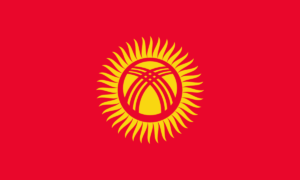Turkic-speaking nomadic people first settled Kyrgyzstan about 201 BC. Islam took over as the area’s main religion in the 12th century. The majority of what is now the Kyrgyz Republic was populated by the Kyrgyz by the 15th and 16th century.
Kyrgyzstan was annexed by the Russian Empire in 1876. A large number of Kyrgyz people migrated to Afghanistan, the Pamir Mountains, or China. The Soviet Union took control after the Russian Empire collapsed. Kyrgyzstan attained complete independence in 1991. Askar Akaev served as the nation’s first president for 15 years. He lost his job in 2005. Since then, there has been instability throughout the country.
| Capital | Bishkek |
| Population | 6,756,039 (Source: 2023 worldometer) |
| Major Cities | Bishkek , Osh, Jalal-Abad, Karakol, Tokmok, Uzgen, Kara-Balta, Balykchy, Naryn |
| Borders | Kazakhstan on the northwest and north, by China on the east and south, and by Tajikistan and Uzbekistan on the south and west |
| Gross Domestic Product (GDP) | $10,930,644,915 (2022 worldometer) |
| Currency |

Kyrgyzstan Major Industries: small machinery, textiles, food processing, cement, shoes, sawn logs, refrigerators, furniture, electric motors, gold, rare earth metals
Kyrgyzstan Agricultural Products: tobacco, cotton, potatoes, vegetables, grapes, fruits and berries; sheep, goats, cattle, wool
Kyrgyzstan Natural Resources: abundant hydropower; significant deposits of gold and rare earth metals; locally exploitable coal, oil, and natural gas; other deposits of nepheline, mercury, bismuth, lead, and zinc
Kyrgyzstan Major Exports: cotton, wool, meat, tobacco; gold, mercury, uranium, natural gas, hydropower; machinery; shoes
Kyrgyzstan Major Imports: oil and gas, machinery and equipment, chemicals, foodstuffs
Total Size of Kyrgyzstan: 331,690 km² (source: wikipedia)
Geographical Low Point of Kyrgyzstan: Kara-Daryya (Karadar’ya) 132 m
Geographical High Point of Kyrgyzstan: Jengish Chokusu (Pik Pobedy) 7,439 m
Climate of Kyrgyzstan: dry continental to polar in high Tien Shan; subtropical in southwest (Fergana Valley); temperate in northern foothill zone
General Terrain of Kyrgyzstan: peaks of Tien Shan and associated valleys and basins encompass entire nation
World Region or Continent of Kyrgyzstan: Asia
Geographical Coordinates: 41 00 N, 75 00 E
Kyrgyzstan Government Type: republic
Kyrgyzstan Nationality: Kyrgyzstani(s)
Kyrgyzstan National Holiday: Independence Day, 31 August (1991)
Kyrgyzstan Independence: 31 August 1991 (from Soviet Union)
Kyrgyzstan National Symbol: gyrfalcon
Kyrgyzstan National Anthem or Song: Kyrgyz Respublikasynyn Mamlekettik Gimni (National Anthem of the Kyrgyz Republic)
Kyrgyzstan Languages Spoken: Kyrgyz (official), Russian (official)
Kyrgyzstan Religions: Muslim 75%, Russian Orthodox 20%, other 5%
Since 1991, Kyrgyzstan has been independent of the Soviet Union.
Kyrgyzstan is an island nation.
Sunni Muslims make up 90% of the population of Kyrgyzstan.
Mountains cover 70% of Kyrgyzstan.
One of the least populated nations in the world is Kyrgyzstan.
The longest poem ever written was produced in Kyrgyzstan.
The second-largest high-altitude lake in the world, Lake Issyk Kul, is located in Kyrgyzstan.
Three UNESCO World Heritage sites can be found in Kyrgyzstan.
Kyrgyzstan has one of the world’s shortest rail systems.
In Kyrgyzstan, there are roughly 2,000 lakes.
Horse Milk is the nation’s official beverage.
In Kyrgyzstan, there is the world’s largest walnut forest.
In Kyrgyzstan, yurts are still frequently utilized.
Initiated by Kyrgyzstan, the World Nomad Games.
It is still customary to use eagles for hunting.
The capital of Kyrgyzstan and the biggest city is Bishkek.
The second moniker for Kyrgyzstan is “Switzerland of Central Asia” (named by individuals).
In Kyrgyzstan, the tallest mountain is roughly 7,400 meters high.
500,000 lines are in the epic of Manas.
Manas is a legendary figure in Kyrgyzstan.
In Kyrgyzstan, there are 11 national parks.
Beshbarmak is the national dish of Kyrgyzstan.
In Kyrgyzstan, horse meat is a staple of the cuisine.
The national beverage of Kyrgyzstan is kumys.
Tajikistan, China, Kazakhstan, and Uzbekistan all share a land border with Kyrgyzstan.

